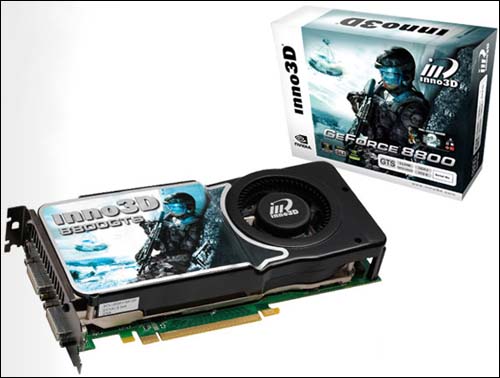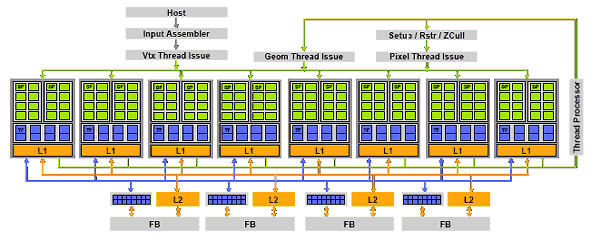GeForce 8800 GTS 512 мб

Shortly after the announcement of the GeForce 8800 GT 512Mb, the first solutions based on the G92 graphics processor, which, by the way, is called D8P in accordance with the new naming system, NVIDIA gathered a sufficient number of fully working chips, which made it possible to introduce a more powerful GeForce 8800 graphics processor. GTS 512MB.

Architecturally, the GeForce 8800 GTS 512Mb differs from the GeForce 8800 GT 512Mb by the inclusion of another previously inactive module that contains 16 unified stream processors and 8 texture units (8 texture address units and 8 texture filter units). Plus, the clock frequency of the GPU itself was increased to 650 MHz and the shader domain to 1625 MHz. As for the rest, the graphic processor GeForce 8800 GTS 512Mb has no differences from GeForce 8800 GT 512Mb.
Specifications NVIDIA GeForce 8800 GTS 512
| Name | GeForce 8800 GTS Rev2 |
| Core | G92 (D8P) |
| Process technology (µm) | 0.065 |
| Transistors (million) | 754 |
| Core frequency | 650 |
| Memory frequency (DDR) | 970 (1940) |
| Bus and memory type | GDDR3 256-320 Bit |
| Bandwidth (Gb/s) | ? |
| Unified shader blocks | 128 |
| Frequency of unified shader units | 1625 |
| TMU per conveyor | 64 |
| ROP | 16 |
| Shader Model | 4.0 |
| Fill Rate (Mpix/s) | 10400 |
| Fill Rate (Mtex/s) | 41600 |
| DirectX | 10.0 |
| Anti-Aliasing (Max) | SS&MS - 16x |
| Anisotropic Filtering (Max) | 16x |
| Memory | 512/1024 |
| Interface | PCI-E 2.0 |
| RAMDAC | 2x400 |
Video cards based on the GeForce 8800 GTS with 512 MB of video memory were and are very productive solutions, although they have a slightly lower price/performance ratio than the GeForce 8800 GT 256-bit. In most tasks, this GPU can be even faster than top G80 solutions such as the GeForce 8800 GTX and even the GeForce 8800 Ultra, having the same number of pipelines, but running at a higher frequency and using faster memory. Difficulties can arise only in very resource-intensive games, when more than 512 MB of local video memory is required or a very intensive exchange with it is needed, then the 256-bit memory bus will become a bottleneck.
To fully load the video card, you will need a sufficiently productive dual-core Core 2 Duo processor with a clock speed of 3 GHz, or better, faster.



